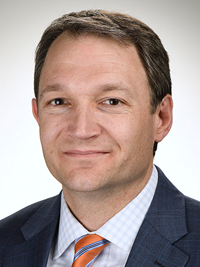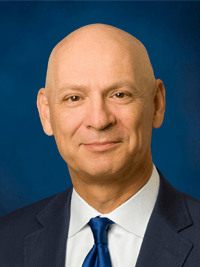How some healthcare providers are handling the growing nurse shortage
Many hospitals and healthcare systems are struggling with rising labor costs, high job turnover and the resulting workflow and process challenges that ensue. All of these challenges are made significantly worse by a continued shortage of nurses in the industry.
Virtual nursing programs are viewed as a key element in easing the growing nursing shortage as it was a key focus at the annual conference of the American Organization for Nursing Leadership, AONL 2024. At that event, nursing leaders discussed how they are utilizing virtual nursing and robotics in their care models to improve recruitment and retention.
The need for such programs is clear. The World Health Organization estimates an additional six million nurses will be needed globally by 2030.[1] And the Health Resources & Services Administration (HRSA) health workforce data predicts for the United States a “projected shortage of 78,610 full-time equivalent (FTE) RNs in 2025 and a shortage of 63,720 FTE RNs in 2030.”[2]
While not a new concept, virtual nursing came into wider use during the COVID-19 pandemic. It combines communication with technology, to enable a nurse to be present “virtually” at a patient’s bedside and in care discussions. Virtual nurses tend to have advanced experience, and work at remote centers with technology-enabled workstations.
As Jennifer Ball, program manager of digital and virtual care at Saint Luke’s Health System in Kansas City, notes on the American Nurses Association website, “Virtual RNs can support the team at the bedside to alleviate the workload and provide greater satisfaction for both the patients and the nursing staff. We are all aware of the current and future staffing challenges in healthcare, and this is one way to address it. It also provides opportunities for nurses that are not wanting to leave the workforce but have years of great experience and knowledge to continue their career in a less physical role.”
Virtual nursing models vary. Banyan Medical Solutions defines virtual nursing as an innovative care model that leverages advanced communication technologies to support 24/7 care that improves hospital outcomes and patient satisfaction. Virtual nurses, with distinct responsibilities, work in collaboration with direct care RNs.
In an HFMA roundtable discussion in 2024, several healthcare finance professionals shared the challenges that their organizations face with nurse staffing and discussed business models such as virtual nursing that can help improve patient outcomes, staff satisfaction and key financial measures.
What are the top challenges that hospitals and healthcare systems face with staffing?
Genaro Grajeda: Hospitals are all concerned over the level of nursing skills available to hire. Before COVID, we had nurses in the job market that were more tenured, with maybe five to eight years of experience. After COVID, hospitals are having to recruit nurses that only have one or two years of experience. So the impact on patient safety is a growing concern.
Mike Browning: OhioHealth serves 51 of the 80 counties in the state of Ohio, so we have a large footprint in the state. Our biggest challenge has been at our two large facilities in Columbus. One is a level-one trauma center in downtown Columbus. The other is an 800-bed tertiary quaternary facility that is almost always at capacity.
We just opened a new hospital in Columbus, and we were able to equip our patient rooms with virtual nursing capabilities. Virtual nursing is a significant opportunity for the industry. The obvious issue with virtual nursing is the investment it takes to equip patient rooms with the technology to support it.
What is your organization doing to recruit and retain nurses other than raising salaries?
David Schweer: Organizations I have been with have looked at offering benefits such as childcare, additional recruitment staffing events, nursing program partnerships, new graduate nursing programs and positions, virtual nursing and additional CNA programs, care assistants to help nurses with their work, EMR training, reward and recognition programs, and additional pay for meeting defined education and development goals.
Marcus Armstrong: Things we focus on include implementing more flexible schedules, prioritizing technologies that augment nurses’ labor, making nursing jobs easier with less risk of error and developing clear policies about inclusivity and support in the workplace.
Our organization is piloting a virtual nursing program to mitigate nursing staff shortages by leveraging a pool of candidates that are either ready to retire or have retired, bringing them back into the workforce. The program primarily focuses on patient safety, having a virtual nurse monitoring patients for safety and providing education and discharge information.
How are you measuring the effectiveness of your strategies to address staffing issues?
Armstrong: We tracked our vacancy and contracted staffing usage along with the standard labor as a percentage of total costs.
Mark Serain: The two most notable tactics we have used to measure effectiveness are a daily productivity tool and labor business review.
We have built a homegrown daily productivity tool to capture worked hours and volume. Key clinical service lines are collecting and inputting time-and-attendance data and units of service volumes into the spreadsheet tool to calculate actual hours per unit of service performance against target.
We are actively working on a solution to automate this data through a third-party productivity measurement platform. The platform will integrate with other technologies to collect and calculate performance where our managers and directors can review and provide variance explanations and action plans on a daily basis.
With the labor business review, using the Lean Six Sigma methodology, we are utilizing an A3 template that enables us to define, measure, analyze, improve and control labor cost variance. The top 20 areas of negative variance, which include 10 volume-related and 10 non-volume-related cost centers, are required to complete the document and present it to senior leadership for review and recommendation on a monthly basis.
What are the top challenges of recruiting nurses in rural areas?
Forrest Ehlinger: We are a comprehensive but small health system in central Montana, which has both advantages and disadvantages. Because we have 90% of market share, there is a bit more stability with nursing staff than you would expect in a competitive market. I came out of the Seattle market, where [talent was at a premium]. Now, workers are more plentiful so I can focus more on developing needed skills.
How can virtual nursing help offset nursing staff shortages?
Ryan Scott: Today’s virtual nursing model utilizes licensed RNs who can handle many of the non-hands-on tasks typically performed by bedside nurses.
Serain: We are piloting virtual nursing right now. Nothing has been launched quite yet, but we’re looking at certain units as the most likely places to start. One area of interest is around the idea of having a second verifier within a patient room. We’re also thinking of using it with admissions and discharges, including education, discharge instructions and planning. We don’t have a safety assistance center type of virtual approach yet in our system, but we are looking at how we can use virtual nursing to improve safety.
Besides gains with recruiting, what other benefits can virtual nursing offer?
Adam Kempf: We’ve been piloting virtual nursing in a couple of our hospitals since the fall, and we’ve seen some really good and interesting results. One of the benefits is greater retention. It’s much easier to recruit to a unit that has virtual nursing available. Many new grads want support that a virtual nurse system can offer. Having this additional resource for recent graduate bedside nurses is extremely beneficial. We’re probably a little bit early to declare any kind of victory with virtual nursing in our journey with it. But for the first six-to-nine months that we’ve had this in in place, we are definitely seeing improved retention rates in those units.
How does a healthcare organization best go about adopting a virtual nursing program?
Serain: The last couple of years have been really pivotal in the way that our leadership team has come together from a corporate finance perspective and involving all clinical components. We have nine hospitals and 300+ sites of care. Our focus has been on five clinical institutes, primary care, cancer, cardiovascular, neurosciences and orthopedics. We are exploring how virtual nursing might be applicable in any or all of these areas.
Queiro: I’m probably the only one here that has been in a public hospital, and that has its own challenges. We are smack in the middle of Nashville, where we have Vanderbilt HCA. We are this little engine that could, which means that we don’t have the financials to be able to attract and compete for local nurses. So we have to be extremely creative.
Right after COVID, the stakes went up. We needed to bring in more nurses but needed patient ratios caused a great deal of unevenness in experienced nurses versus non-experienced. We saw virtual nurses as a big part of the solution. Our focus was on the ambulatory side of operations first, because those nurses are at a lower-pay level, and we can do more with them.
Are there any unique challenges to successful virtual nursing in behavioral health situations?
Armstrong: Recruiting is generally a challenge because not everyone wants to work in this niche area. There is often a stigma associated with behavioral health. Seven Hills is fortunate because it is fairly well staffed, with maybe less than 5% of nurses being travelers.
Still, Seven Hills is part of a big national for-profit system. So it has the whole for-profit issue, and it gets challenging to be competitive with nurse pay. There is a competitor in town. It’s a for-profit center, but it is pretty much privately owned. They have the ability to pay a little bit more, so we are always trying to keep pace with them. Pay has therefore been an issue with nurses, and we’ve looked at other ways to incentivize them.
What impacts do virtual nursing platforms and HR solutions have on administrative burdens?
Scott Wooten: Virtual nursing provides some relief from the recruiting and retention challenges in healthcare, by enabling health providers to better share tasks and to mutually access patient information. Bedside nursing activity is really tied up with administrative processes. Their time is better spent on clinical tasks, not administrative ones.
The mission of healthcare is in its name: care. Nurses are the pillars of that care. So I’m seeing many of my clients pursue virtual solutions and achieve very tremendous results — both on the people side of the equation and on the financial side.
How do such systems impact the delivery of training to nurses, and resulting care?
Schweer: It depends on what is needed of the virtual nurse — what tasks they will be asked to do and decisions they may have to make. Are you recruiting somebody who’s had some experience and is somewhat fluent with an Epic system, or are they just somebody coming into the industry with no experience yet? It might take them anywhere from 13 to 26 weeks just to achieve competence.
Also, the anecdotal evidence suggests that the level of safety engagement could vary widely. It obviously depends on the individual and the professional experience that they bring to the table.
Ehlinger: We’ve partnered with MSU nursing, and they’re going through a large donation that they got that will double their capacity to educate nursing students. But that’s a long-term plan. That’s four years out.
What we’re seeing is not so much that nurses are leaving the profession, but that nurses are choosing to leave the bedside.
I’m sure that a challenge nationally is the requirement that teachers have a master’s degree. Also, getting people to step out of a bedside-care role to train new nurses is a challenge. So we’re trying to overcome that. In the meantime, we went live on virtual nursing [mid-June 2024]. We are already using it with admitting and discharging, and with patient education.
Conclusion
Hospitals and healthcare systems simply can’t recruit their way out of today’s staffing crisis. Healthcare executives therefore need to look for creative solutions to better utilize their resources and to strategies that enable them to maintain quality care with strained resources.
Panelists said that health providers continue to struggle with outdated nurse staffing models, a shortage of needed experience and skills in the job market, nurse burnout and expensive travel nurse programs. All of these challenges are straining staff, budgets and growth.
According to an Advisory Board report, “By shifting these responsibilities to virtual nurses, the model ensures comprehensive coverage, lowers turnover and enhances efficiency through seamless integration and real-time communication with the existing healthcare teams.”[3]
“This approach also alleviates the workload of bedside nurses, allowing them to concentrate on direct patient care and operate at their highest professional capacity”[4] Consequently, both nurses and patients experience increased satisfaction levels. Taking advantage of available echnology, healthcare providers can better use nursing resources where and how they are most needed and effective. According to some panelists, having virtual nursing as part of the equation enables staff to better share and prioritize tasks according to skill and experience.
Panelists

MARCUS ARMSTRONG
FHFMA, MBA, CPA, is a former CFO at a behavioral health hospital in the Western United States.

MICHAEL BROWNING
MBA, CPA, is senior vice president and CFO with OhioHealth in Columbus, Ohio.

FORREST EHLINGER
CPA, is the former executive vice president of system finance and business operations at a Montana health system.

GENARO GRAJEDA
CHFP, MPA, is CEO with HealthPact in San Bernardino, Calif.

ADAM KEMPF
CPA, is senior vice president and chief finance and administrative officer with Norton Healthcare in Louisville, Ky.

NIOBIS (NIO) QUEIRO
CRCR, CPC, RHIA, is interim chief revenue officer with Nashville General Hospital in Tennessee.

DAVID SCHWEER
FACHE, is director of finance, with Mercy Siouxland Medical Center in Sioux City, Iowa.

MARK SERAIN
FHFMA, MBA, LSSGB, is director of workforce optimization at Endeavor in Arlington Heights, Ill.

RYAN SCOTT
is senior vice president/chief business officer with Banyan Medical Solutions in Omaha, Neb.

SCOTT WOOTEN
FACHE, MBA, is chairman and CEO with Wooten Strategic Advisors in Ponte Vedra Beach, Fla.
About Banyan Medical Solutions
Banyan Medical Solutions provides a virtual nursing care model that integrates bedside teams and patients, addressing staffing challenges and enhancing care quality. Their platform supports real-time communication, data sharing, and patient monitoring, improving workflow efficiency, patient outcomes, and return on investment. As the healthcare industry’s most experienced and robust virtual nursing provider, Banyan Medical Solutions has been a transformative partner for healthcare facilities nationwide. To learn more about how Banyan can provide enterprise-wide support for your hospital, visit banyanmed.com or call (866)-264-0469 for more information.
This published piece is provided solely for informational purposes. HFMA does not endorse the published material or warrant or guarantee its accuracy. The statements and opinions by participants are those of the participants and not those of HFMA. References to commercial manufacturers, vendors, products, or services that may appear do not constitute endorsements by HFMA.
Footnotes
[1] “WHO and partners call for urgent investment in nurses,” World Health Organization, press release, April 7, 2020.
[2] Nurse Workforce Projections, 2020-2035, Health Resources and Services Administration (HRSA), November 2020.
[3] “Virtual nursing: What it is and why we need it,” Advisory Board, September 2023.
[4] Ibid.






